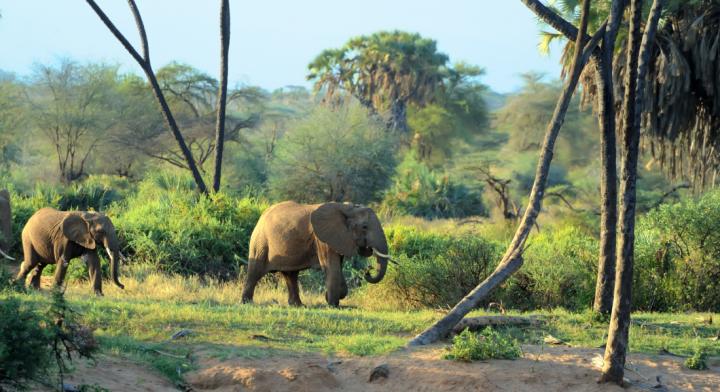
Credit: Colourbox.
Over the last 200 years, researchers have worked towards understanding the global distribution of species and ecosystems. But so far even the basic knowledge on the global geography of genetic diversity was limited.
That now changes with a recent paper from Globe Institute. Professor David Nogues Bravo and his team has spent the last eight years combining data from scientific gene banks with scenarios of future climate and land-use change. The result is the first ever global assessment of how it will impact the genetic diversity of mammals, e.g. when tropical forests are converted to agricultural land.
‘Our study identifies both genetically poor and highly diverse areas severely exposed to global change, paving the way to better estimate the vulnerability to global change such as rise in temperature as well as land-use changes. It could help countries to find out how much of the genetic diversity in their own country may be exposed to different global change impacts, while also establishing priorities and conservation policies’, says David Nogues Bravo.
For example, Northern Scandinavia will be heavily impacted by climate change and not so much from land use change, whereas the tropical areas of the world will suffer from both climate change and land-use change. However, David Nogues Bravo underlines that it is difficult to compare areas.
‘The genetic diversity in Scandinavia is always going to be lower than in the tropics, but that doesn’t mean that the overall diversity there is not important. If we lose populations and species such as the polar bear, it’s just one species but it will it will impact the total stability of ecosystems. However, the largest threat to genetic diversity will be in the tropical areas, which currently harbor the largest diversity of the bricks of life, genes. These regions include ecosystems like mangroves, jungles and grasslands’, says David Nogues Bravo.
Putting it all together
The researchers have looked into gene banks with mitochondrial data from mammals. The mitochondria also regulate the metabolism, and by looking how it has changed over time, it can also unveil changes in diversity.
‘The mitochondrial diversity is a broad estimate of adaptive capacity. We also used to think that mitochondria was a neutral marker, when it is in fact under selection. That means that some selection may relate to the physiological limits of a species in relation to climate, which makes it a very useful tool for researchers to track how global change impacts the genetic diversity in a specific area’, explains David Nogues Bravo.
For many samples, there were not any geographical information available. The researchers used artificial intelligence to add geographical locations and then they built models predicting how much genetic exits in places without data.
Then the researchers analyzed maps of genetic diversity, future climate change and future land-use change, to reveal how and where global change will impact mammals.
Interest from the United Nations-agency
The research has attracted the attention of Secretariat of the United Nations Convention on Biological Diversity. David Nogues Bravo hope that the assessment map could become an important tool for the high-level summits among countries to help define policies for biodiversity protection.
‘We are only now starting to have the tools, data and knowledge to understand how genetic diversity changes across the globe. In a decade from now, we will be able to know also how much of that genetic diversity has been lost since the Industrial Revolution for thousands of species and in a stronger position to bring effective measures to protect it’, he says.
In the coming years, he hopes that scientists will map the global genetic diversity of many other forms of life, including plants, fungi and animals across the lands, rivers and oceans.
‘Have been attempts to map the genetic diversity for amphibians, birds and reptiles, but we don’t have maps for plants, insects or fungi. And whereas there are around 5000 mammal species, there are many more insect or fungi species, maybe millions. We don’t even know how many, yet. So it will take longer, but it will come in the next decade’, he says.
‘We hope to see more of these assessments in the next decade, and to complement then with long-term monitoring programs, in which we can monitor the genetic diversity of thousands of species and ecosystems across the planet continually’, says David Nogues Bravo.
###
Media Contact
Professor David Nogues Bravo
[email protected]
Original Source
https:/
Related Journal Article
http://dx.




